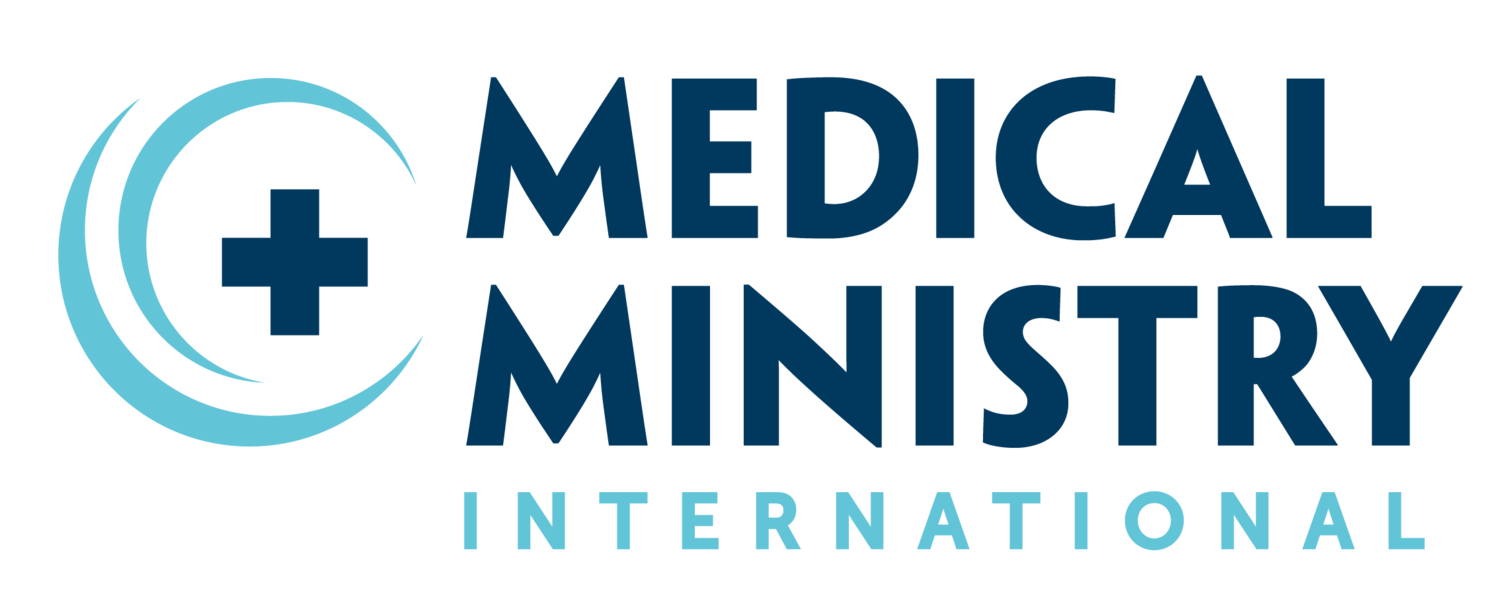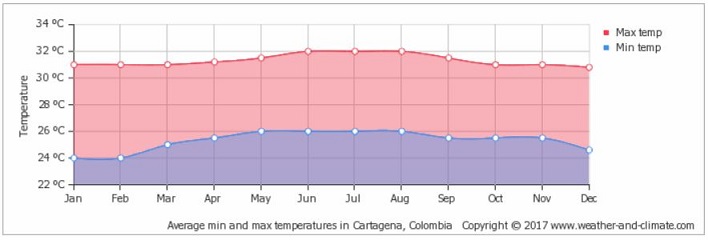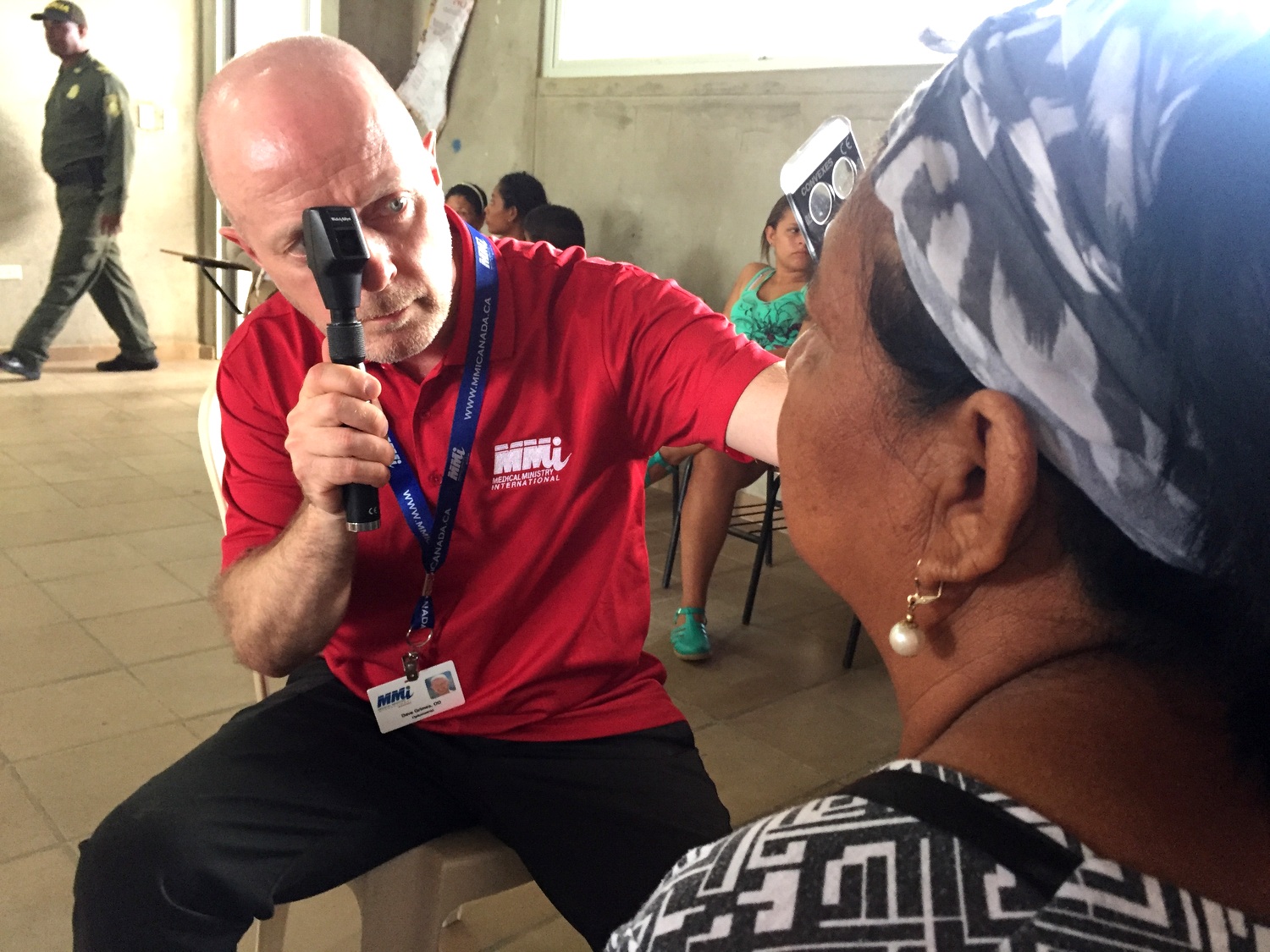Medical Ministry International in Colombia
Medical Ministry International first travelled to Colombia in 2004, under the leadership of Willie and Janice Hunter and at the invitation of Antonio and Ruth Cortes and the Iglesia Cruzada. Project teams in Colombia aim to provide basic primary care and dental care in the Amazon Region, as well as specialized vision services. Vision care projects are focused in urban areas, and include opportunities for local medical personnel to receive training. These large projects typically see a high volume of patients seeking a wide range medical services. Through Medical Ministry International and our project partners, the 'blind' can now see.
Juan Alan Muñoz was born in 1972 to a Colombian father and an Irish mother, who were called to be missionaries in the Amazon jungle of Colombia. Juan Alan studied Economics at university in Northern Ireland and Finance in Bogotá, Colombia. He has been working in the area of business administration in the health sector of Colombia since 1996. He began serving with Medical Ministry International as National Director of MMI Colombia in 2004 and as CEO of Clínica Leticia in 2013. He is a father of three children: Juan David, Andres Felipe, and Isabella, who also help Medical Ministry International. Juan Alan spends his time between Bogotá and Leticia, always with a cup of coffee in hand. Juan Alan and his wife, Leonor work closely with Medical Ministry International in planning the projects in the Amazon Region and other areas of Colombia.
Juan Alan Muñoz - Project Director
Juan Alan Muñoz is developing MMI Colombia with strong community leaders. Eye care projects led by Richard and Barbara Skinner and Juan Alan Muñoz have served over 65,000 patients since 2005 in Buenaventura, Barranquilla, Cartagena, Leticia, Ciénaga, and Riohacha.
Project Sites:
Barrancas, La Guajira
Barrancas is a town and municipality of the Colombian Department of La Guajira. The municipality of Barrancas is located to the left margin of the Ranchería River in a valley formed between the Sierra Nevada de Santa Marta mountains and the Serranía del Perijá.
Barrancas commercializes in small scale agricultural products such as coffee, plantain, cotton, maize and yuca, but the main economic activity in the municipality is the exploitation of coal at Cerrejón coal mine. The Cerrejón coal mine is one of the largest open pit coal mine in the world.
Elevation
40 m (131 ft)
Climate
The climate present in the region is predominantly hot and dry with no mountainous climate variations, maintaining an average temperature throughout the year of 28°C.
Patient Story
© Elizabeth Opalenik
"Why are you so happy?" "Because my mom can see again!" -Luz
Three years ago, Luz's mother, Dayli, was diagnosed with cataracts. The disease progressed rapidly and soon Dayli had no vision in her right eye, and only 20% in her left. Her daughters had to help her to do every-day tasks, like cooking and crossing the street.
When an MMI team visited her community in La Guajira, Colombia, a few weeks ago, Dayli was able to have surgery on her cataracts. After three years of struggling to see, Dayli's sight has been restored! “The first thing I saw was the face of the doctor, I felt great happiness” Dayli says, “I could not stop crying… [I feel that] God loves me. Despite all my sins - he still loves me.”
Travelling on a Project
MMI Amazon & Clinica Leticia
Medical Ministry International has formed an alliance with this clinic in Leticia. Here, a moderate level of health care are provided, such as surgeries and deliveries. In the Amazon region, many patients are transported weekly to Colombia’s capital, Bogotá, due to lack of advanced medical machines and specialists. Clinica Leticia is working to upgrade its facilities to reduce the number of air transports.
In some villages, there are individuals with very basic medical training, but resources and medicine are often extremely limited. Because of this, the villagers commonly wait until they are extremely sick before getting medical attention. Another factor that affects the villagers is distance; health centres are often far from their village and transportation can be unaffordable.
About Colombia
Country Background
Colombia is one of the most ethnically, linguistically, and ecologically biodiverse countries in the world. The urban centres are mostly located in the highlands of the Andes mountains, and the Colombian territory also encompasses Amazon rainforest, tropical grassland and both Caribbean and Pacific coastlines. Indigenous populations such as the Muisca, Quimbaya, and Tairona have mixed with Spanish, African, and Middle Eastern immigrants to create a culture as unique as its landscape. Colombia is the third most populous Latin American country with 47 million persons. It thereby possesses an incredibly rich cultural heritage.
Health care reforms in the 1980s have made great strides in Colombia: it is estimated that 96% of the population has health care coverage. However, high quality health care is only available to the emerging middle and upper classes in urban centres. Those that are economically disadvantaged frequently suffer from less attention, allowing health disparities to continue. Life expectancy and infant mortality measures are slowly increasing, and are among the best in Latin America. A shortage of qualified healthcare workers allows infectious diseases to continue to spread, however chronic diseases such as hypertension and diabetes are increasing in prevalence.
Colombia has a strong education system, and most people are literate and finish secondary school. Interestingly, rural education is often of high quality due to a novel teaching method Escuela Nueva that places students at the centre of learning.
LOCATION:
Northern South America, bordering the Caribbean Sea, between Panama and Venezuela, and bordering the North Pacific Ocean, between Ecuador and Panama.
GEOGRAPHIC COORDINATES:
4 00 N, 72 00 W
MAP REFERENCES:
South America
TOTAL AREA:
1.142 million km²
BORDER COUNTRIES:
Brazil, Ecuador, Panama, Peru, Venezuela
COASTLINE:
3,208 km
MARITIME CLAIMS:
12 nautical miles
CLIMATE:
Tropical along coast and eastern plains, cooler in highlands.
Amazon region is tropical, with average temperature of 27°C (80.6°F)
TERRAIN:
Flat coastal lowlands, central highlands, high Andean Mountains, eastern lowland plains (Llanos)
ELEVATION EXTREMES
LOWEST POINT:
Pacific Ocean - 0 m
HIGHEST POINT:
Pico Cristobal Colon - 5,775 m













